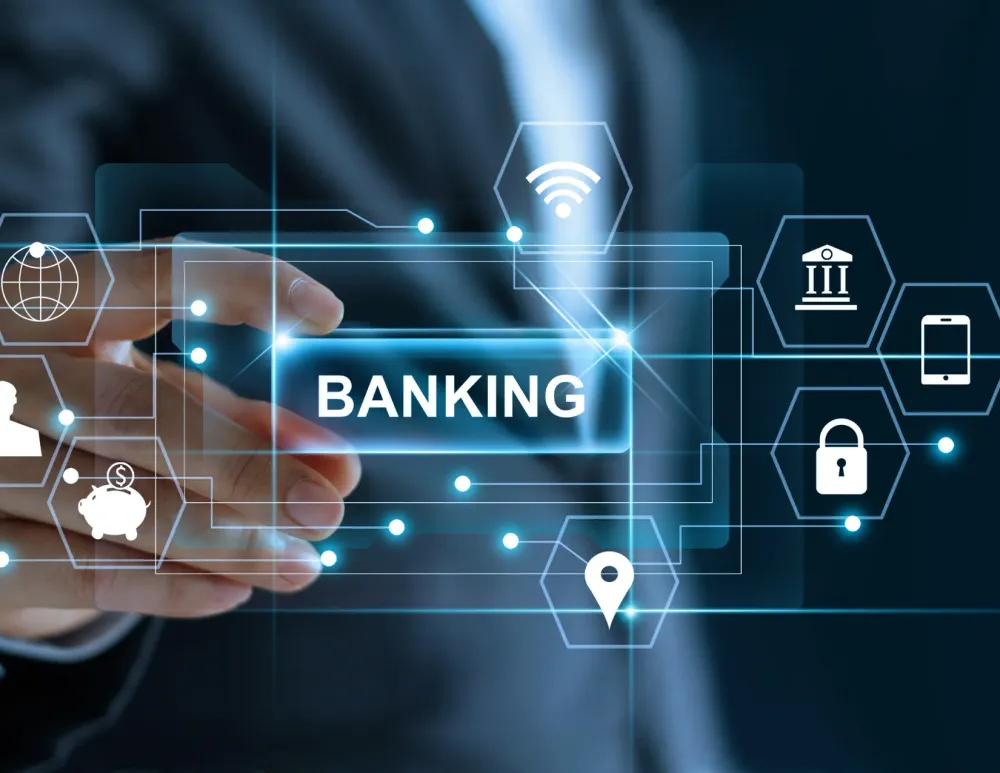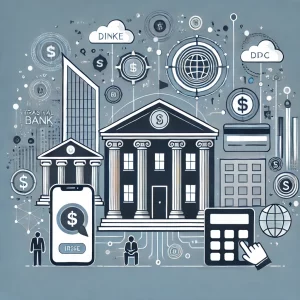The Impact of Technology on Traditional Banking

The banking sector, once characterized by long lines, physical branches, and paper-based transactions, has undergone a radical transformation in recent decades, largely driven by advancements in technology. From mobile banking apps to blockchain and artificial intelligence (AI), technology has reshaped how consumers interact with their financial institutions. The traditional banking model, which relied heavily on in-person interactions, is now shifting towards a digital-first approach, where convenience, speed, and accessibility are paramount.
This article explores the profound impact of technology on traditional banking, covering the rise of digital banking, the benefits and challenges of financial technology (fintech), and the future of banking in a tech-driven world.
1. The Rise of Digital and Mobile Banking
One of the most significant impacts of technology on traditional banking is the rise of digital and mobile banking platforms. In the past, customers had to visit bank branches to perform transactions, open accounts, or seek financial advice. However, with the advent of mobile apps, online banking portals, and digital wallets, banking services are now accessible at the fingertips of users, anytime and anywhere.
Key benefits of digital and mobile banking:
- Convenience: Customers no longer need to visit physical branches to perform everyday banking tasks such as checking their balance, transferring money, or paying bills. Mobile banking apps have made these tasks available 24/7.
- Accessibility: Digital banking platforms provide access to banking services for people in remote or underserved areas who may not have easy access to physical branches.
- Cost Efficiency: Banks can reduce operational costs by automating routine tasks such as account management, customer service, and payment processing, allowing them to allocate resources to more complex financial services.
Mobile banking has also expanded to include services such as budgeting tools, expense tracking, and personalized financial advice, helping customers better manage their finances. As a result, the demand for physical bank branches has decreased, leading many traditional banks to close locations and shift focus to improving their digital presence.
2. The Emergence of Fintech
The rise of financial technology, or fintech, has been one of the most disruptive forces in traditional banking. Fintech companies leverage technology to offer financial services that were traditionally provided by banks, often at a lower cost and with a better user experience.
Fintech startups and companies like PayPal, Square, Revolut, and Stripe have introduced innovative financial products and services that challenge the traditional banking model. These include:
- Peer-to-peer (P2P) payments: Services like Venmo and Zelle allow users to send and receive money instantly without needing to visit a bank or write a check.
- Robo-advisors: Automated investment platforms like Betterment and Wealthfront use AI algorithms to manage portfolios and offer personalized investment advice, eliminating the need for human financial advisors.
- Digital lending: Fintech platforms such as LendingClub and SoFi offer online loans, bypassing the lengthy approval processes and high fees of traditional banks.
- Cryptocurrency: Fintech companies have embraced blockchain technology and cryptocurrencies like Bitcoin and Ethereum, offering alternative ways for people to store value, make transactions, and invest.
Fintech companies have raised consumer expectations for banking services, pushing traditional banks to adopt similar technologies or partner with fintech startups to stay competitive.
3. Blockchain and Cryptocurrency in Banking
Blockchain technology and cryptocurrency are perhaps the most revolutionary innovations to hit the banking sector. Blockchain, a decentralized ledger that records transactions across multiple computers, offers enhanced security, transparency, and efficiency for financial transactions.
Blockchain’s impact on traditional banking:
- Security: Blockchain’s decentralized and immutable nature makes it highly resistant to fraud and cyberattacks, as each transaction is verified by multiple participants before being recorded.
- Transparency: Transactions recorded on a blockchain are visible to all participants, making it easier to trace and verify financial activity, which is particularly beneficial for regulatory compliance.
- Cross-border payments: Traditional international payments can take days to settle and involve high fees. Blockchain-based platforms, like Ripple, offer faster and more cost-effective cross-border payment solutions by eliminating intermediaries.
Cryptocurrencies, such as Bitcoin and Ethereum, offer alternatives to traditional banking systems by enabling peer-to-peer transactions without the need for banks or financial institutions. While still in their infancy, cryptocurrencies have prompted banks to explore digital currencies and blockchain-based payment systems to keep pace with evolving consumer preferences.
4. AI and Automation in Banking
Artificial intelligence (AI) is transforming banking by automating processes, enhancing customer experiences, and improving decision-making. Traditional banks are using AI to streamline operations, reduce costs, and offer more personalized services to customers.
Key applications of AI in banking:
- Chatbots and virtual assistants: AI-powered chatbots, like Erica from Bank of America, assist customers with basic tasks such as checking account balances, transferring money, and answering frequently asked questions. These tools reduce the need for human customer service representatives and improve response times.
- Fraud detection: AI algorithms can analyze large volumes of transaction data in real time to detect suspicious activity and prevent fraud. Machine learning models learn from historical data to identify patterns that indicate fraudulent behavior, allowing banks to act quickly.
- Credit scoring and lending: AI can assess an applicant’s creditworthiness by analyzing a wide range of data points, including income, spending habits, and credit history. AI-driven credit scoring models can provide more accurate assessments, reducing default risk for lenders.
AI also plays a key role in providing personalized financial advice, helping customers make better decisions about saving, spending, and investing. Through data analysis, AI can offer tailored recommendations based on individual financial goals and behavior.
5. The Shift Toward Open Banking
Open banking is a regulatory initiative that allows third-party financial service providers to access consumer banking data (with the customer’s consent) through application programming interfaces (APIs). This shift towards open banking promotes competition, innovation, and consumer choice in financial services.
Benefits of open banking:
- Customer empowerment: Open banking gives customers more control over their financial data, allowing them to share it with third-party apps to find better deals on loans, savings accounts, or investment products.
- Innovation: By opening up banking data, fintech companies can develop new financial products and services tailored to individual customer needs.
- Better financial management: Open banking enables users to view all their financial accounts in one place, even if they are held across multiple institutions. This consolidated view makes it easier for consumers to manage their finances, track spending, and make informed financial decisions.
Open banking challenges traditional banks to collaborate with fintech companies and adopt new technologies to offer innovative products and better customer experiences.
6. Challenges and Risks in the Digital Banking Era
While technology has brought many benefits to traditional banking, it also presents challenges and risks that must be addressed.
Cybersecurity threats: As banks increasingly move to digital platforms, the risk of cyberattacks and data breaches grows. Financial institutions must invest in robust cybersecurity measures to protect sensitive customer data and maintain trust.
Regulatory compliance: The rapid pace of technological innovation in banking has outpaced regulatory frameworks, leading to uncertainty around issues such as data privacy, digital currencies, and cross-border transactions. Banks must navigate a complex regulatory environment to ensure compliance while adopting new technologies.
Digital divide: While digital banking offers convenience for tech-savvy users, there are still populations, particularly older adults and people in rural areas, who may lack access to the necessary technology or prefer in-person banking. Banks need to balance the shift to digital with the need to provide services to these underserved populations.
Disruption of traditional banking jobs: Automation and AI have the potential to replace many of the routine tasks traditionally performed by bank employees, such as customer service, loan processing, and account management. While these technologies improve efficiency, they may lead to job displacement within the banking sector.
The Future of Banking in a Tech-Driven World
The future of banking will be shaped by ongoing technological advancements. Here are some predictions for how the industry may evolve:
- Increased use of AI and machine learning: AI will continue to play a crucial role in customer service, fraud detection, credit scoring, and personalized financial advice.
- Greater adoption of blockchain: Blockchain will become more widely adopted for cross-border payments, trade finance, and supply chain management, offering faster and more secure transactions.
- Digital currencies: As cryptocurrencies gain traction, central banks may issue their own digital currencies, known as central bank digital currencies (CBDCs), to provide a regulated and secure alternative to decentralized cryptocurrencies.
- Expansion of fintech partnerships: Traditional banks will increasingly partner with fintech companies to offer innovative products and services, integrating fintech solutions into their operations to stay competitive.
Conclusion
Technology has dramatically transformed the traditional banking landscape, offering consumers more convenience, accessibility, and personalized services than ever before. Digital and mobile banking, fintech innovations, AI, and blockchain are redefining how financial services are delivered, making the banking industry more efficient and customer-centric.
However, this transformation also brings challenges, such as cybersecurity risks, regulatory compliance, and the digital divide. As technology continues to evolve, traditional banks must adapt to these changes while ensuring they provide secure, innovative, and inclusive services to meet the needs of their diverse customer base. The future of banking is undeniably digital, and those institutions that embrace technology will lead the way in the next era of financial services.




